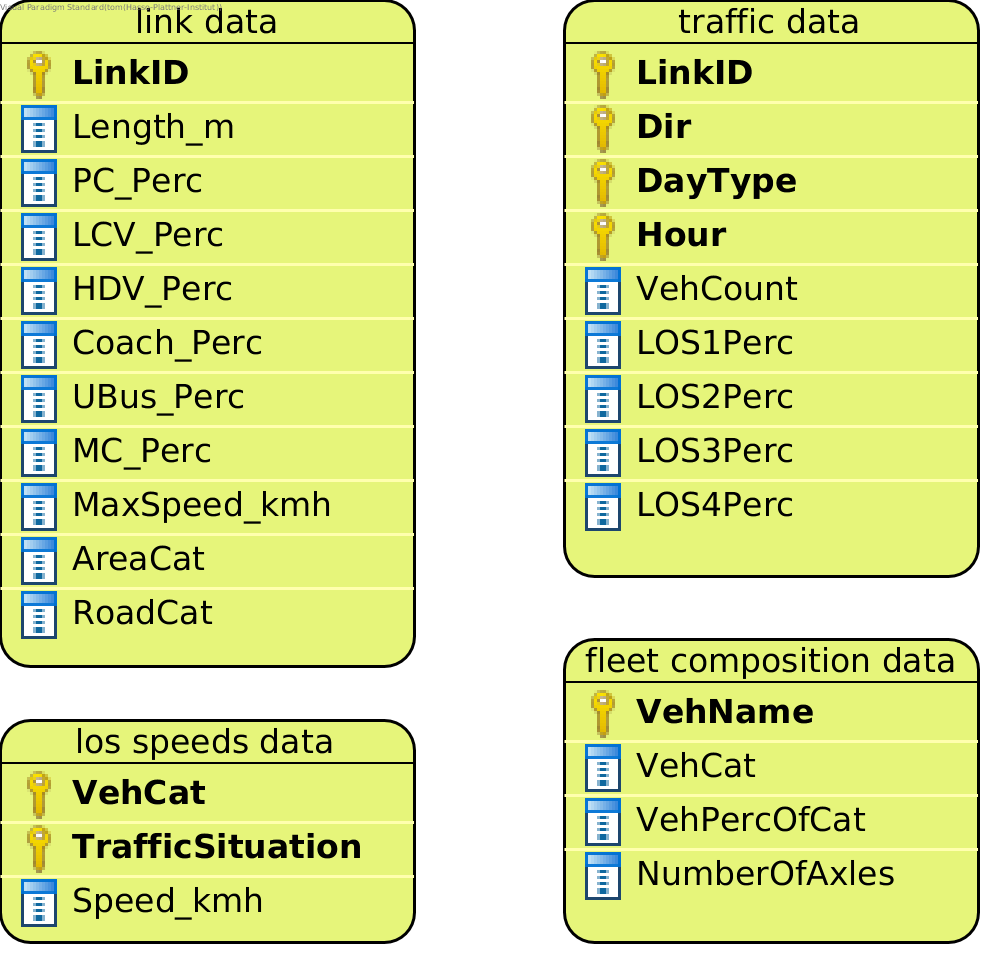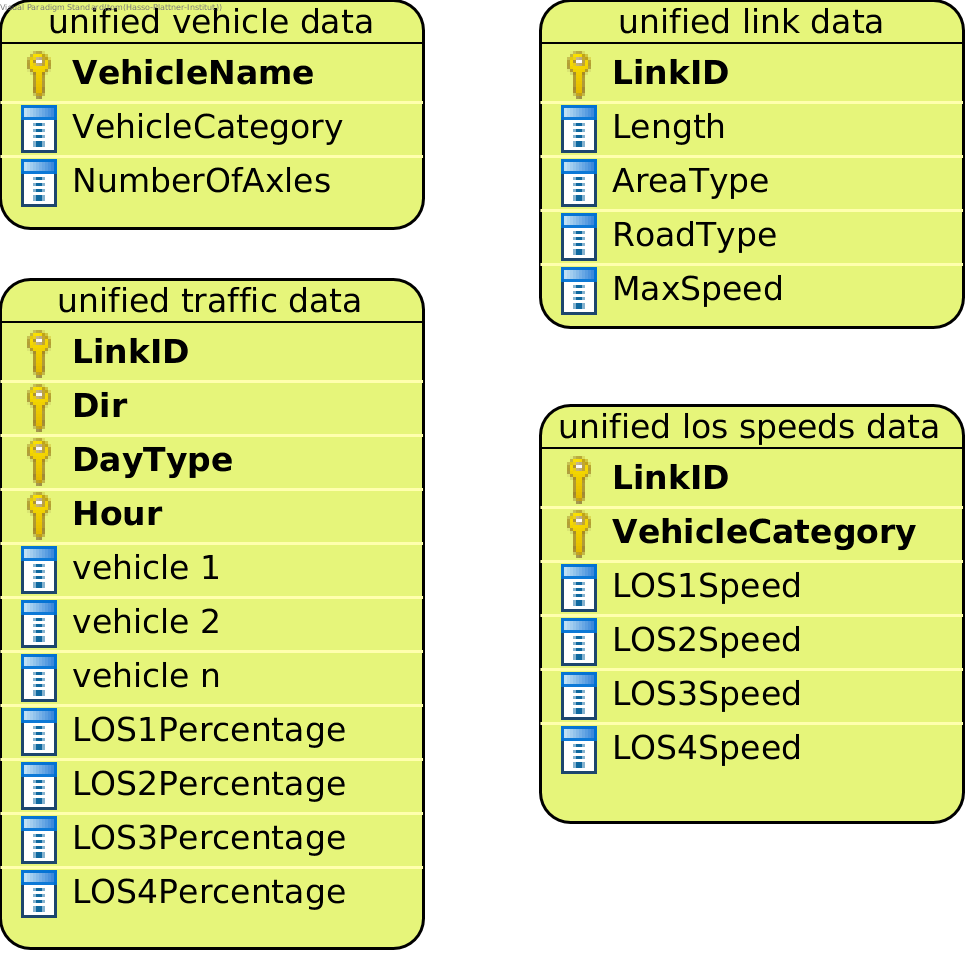PMNonExhaustStrategy¶
The PMNonExhaustStrategy implements emission calculation for PM from non-exhaust emissions.
Sources for PM non-exhaust emissions are tyre wear, brake wear and road surface emissions.
It uses a global assumption about the load_factor for trucks. You need to specify the assumed load_factor in the configuration file as a number between 0 and 1.
This Strategy calculates TSP, PM 10, and PM 2.5 emissions independently for tyre wear, brake wear, and road surface wear. Then it adds up the emissions from all sources to obtain total PM non-exhaust emissions for TSP, PM 10, and PM 2.5.
Output of a model run with this Strategy are three csv files:
- TSP emissions
- PM 10 emissions
- PM 2.5 emissions
Data Requirements¶
What data the PMNonExhaustStrategy requires depends on the mode set in the configuration file for the run.
Data requirements for mode berlin_format¶

link data
Just like the link data required for the other Strategies. See here.
traffic data
Just like the traffic data required for the other Strategies. See here.
fleet composition data
Just like the fleet composition data required for the other Strategies. See here.
los speeds data
Just like the los speeds data data required for the CopertHotStrategy. See here.
Data requirements for mode yeti_format¶

yeti_format link data
Just like the yeti_format link data required for the other Strategies. See here.
yeti_format vehicle data
Just like the yeti_format vehicle data required for the other Strategies. See here.
yeti_format traffic data
Just like the yeti_format traffic data required for the other Strategies. See here.
yeti_format los speeds data
Just like the yeti_format los speeds data data required for the CopertHotStrategy. See here.
Supported Pollutants¶
The only pollutant supported by this Strategy is PollutantType.PM_Non_Exhaust. Set it in the config file:
pollutants: [PollutantType.PM_Non_Exhaust]
What to put in the config.yaml¶
If you want to use the PMNonExhaustStrategy for your calculations, you need to set
the following options in your config.yaml.
Don’t forget to add the parameters specified here: Configuring YETI
If using mode berlin_format:¶
strategy: code.pm_non_exhaust_strategy.PMNonExhaustStrategy.PMNonExhaustStrategy
load_berlin_format_data_function: code.pm_non_exhaust_strategy.load_berlin_format_data.load_pm_non_exhaust_berlin_format_data
load_yeti_format_data_function: code.pm_non_exhaust_strategy.load_yeti_format_data.load_pm_non_exhaust_yeti_format_data
validation_function: code.pm_non_exhaust_strategy.validate.validate_pm_non_exhaust_berlin_format_files
berlin_format_link_data: path/to/link_data.csv
berlin_format_fleet_composition: path/to/fleet_composition_data.csv
berlin_format_los_speeds: path/to/los_speeds_data.csv
berlin_format_traffic_data: path/to/traffic_data.csv
load_factor: 0.3 # A number between 0 and 1. The assumption about the average load of trucks.
If using mode yeti_format:¶
strategy: code.pm_non_exhaust_strategy.PMNonExhaustStrategy.PMNonExhaustStrategy
load_yeti_format_data_function: code.pm_non_exhaust_strategy.load_yeti_format_data.load_pm_non_exhaust_yeti_format_data
validation_function: code.pm_non_exhaust_strategy.validate.validate_pm_non_exhaust_yeti_format_files
yeti_format_link_data: path/to/yeti_format_link_data.csv
yeti_format_vehicle_data: path/to/yeti_format_vehicle_data.csv
yeti_format_los_speeds: path/to/yeti_format_los_speed_data.csv
yeti_format_traffic_data: path/to/yeti_format_traffic_data.csv
load_factor: 0.3 # A number between 0 and 1. The assumption about the average load of trucks.